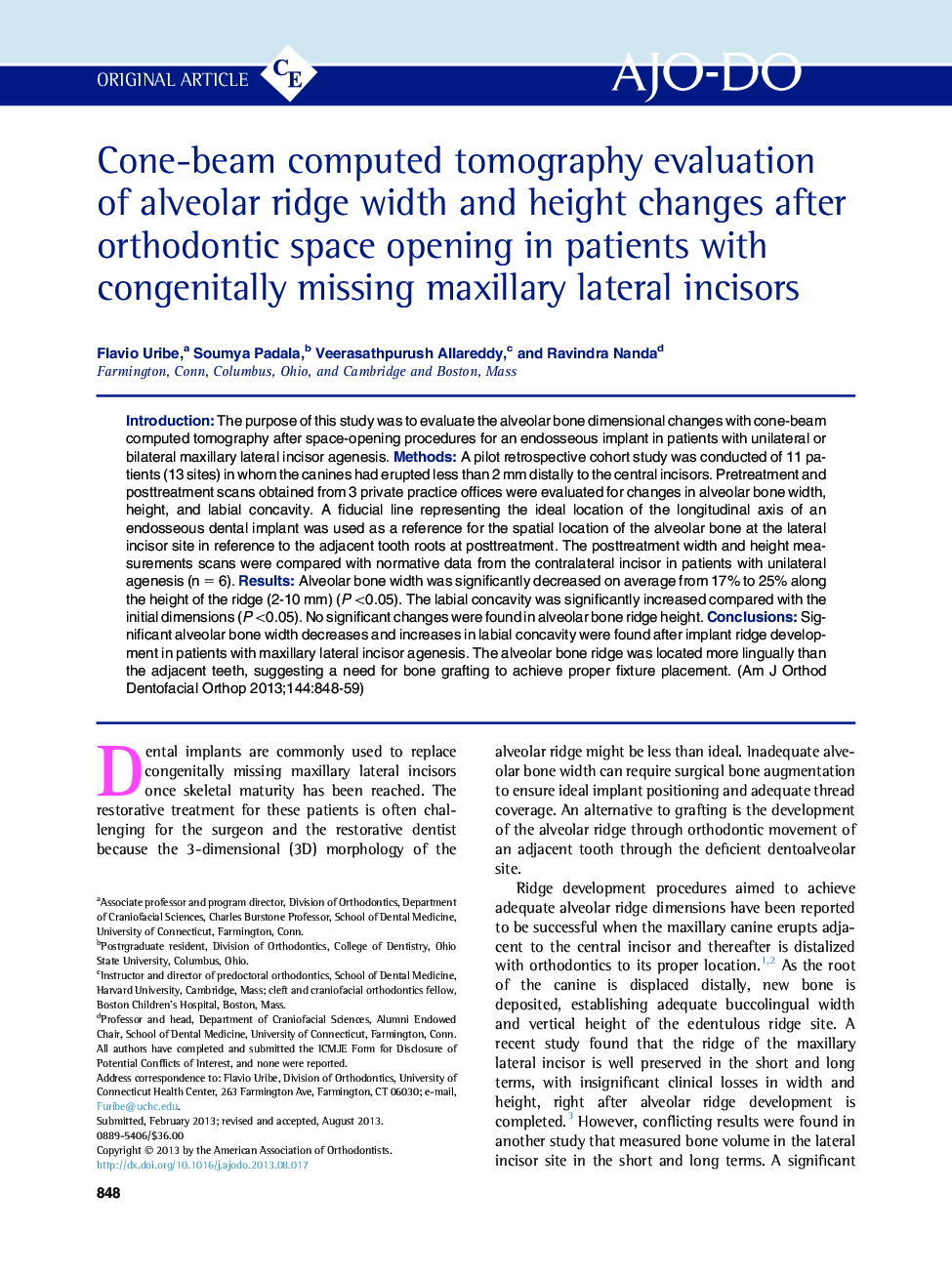| Article ID | Journal | Published Year | Pages | File Type |
|---|---|---|---|---|
| 3116443 | American Journal of Orthodontics and Dentofacial Orthopedics | 2013 | 12 Pages |
IntroductionThe purpose of this study was to evaluate the alveolar bone dimensional changes with cone-beam computed tomography after space-opening procedures for an endosseous implant in patients with unilateral or bilateral maxillary lateral incisor agenesis.MethodsA pilot retrospective cohort study was conducted of 11 patients (13 sites) in whom the canines had erupted less than 2 mm distally to the central incisors. Pretreatment and posttreatment scans obtained from 3 private practice offices were evaluated for changes in alveolar bone width, height, and labial concavity. A fiducial line representing the ideal location of the longitudinal axis of an endosseous dental implant was used as a reference for the spatial location of the alveolar bone at the lateral incisor site in reference to the adjacent tooth roots at posttreatment. The posttreatment width and height measurements scans were compared with normative data from the contralateral incisor in patients with unilateral agenesis (n = 6).ResultsAlveolar bone width was significantly decreased on average from 17% to 25% along the height of the ridge (2-10 mm) (P <0.05). The labial concavity was significantly increased compared with the initial dimensions (P <0.05). No significant changes were found in alveolar bone ridge height.ConclusionsSignificant alveolar bone width decreases and increases in labial concavity were found after implant ridge development in patients with maxillary lateral incisor agenesis. The alveolar bone ridge was located more lingually than the adjacent teeth, suggesting a need for bone grafting to achieve proper fixture placement.
